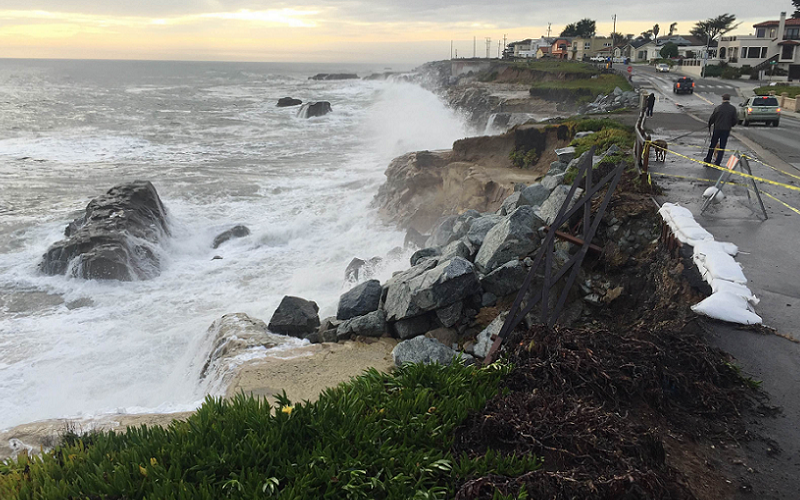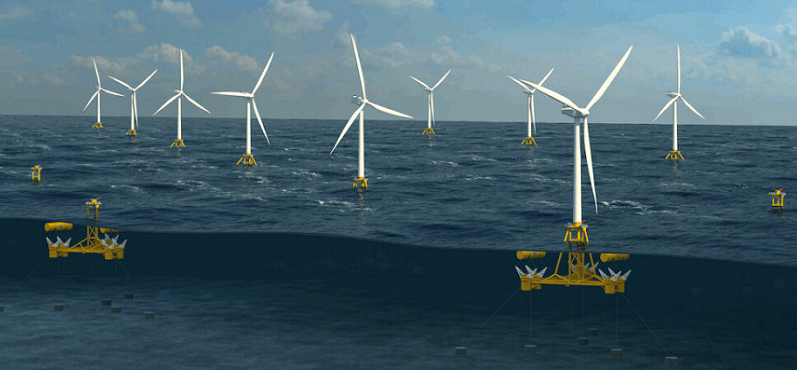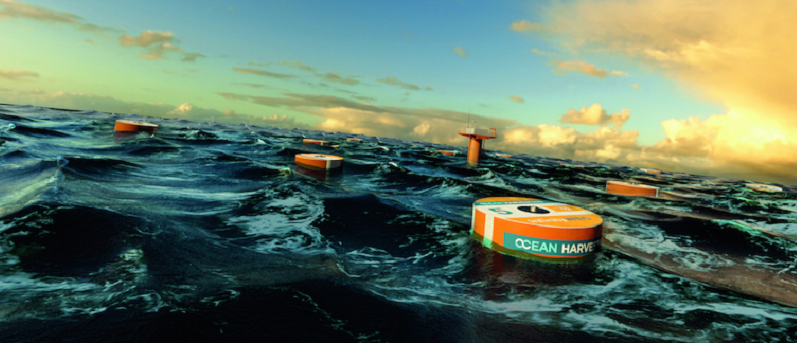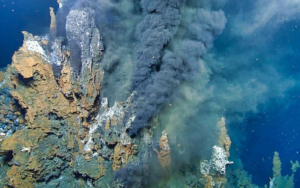
Waves have captivated humanity since the dawn of time, inspiring awe and respect for their raw power and beauty. These natural phenomena have shaped our world in many ways, from eroding coastlines to inspiring legends and myths. However, waves also hold immense potential as a source of clean and sustainable energy.
Understanding Waves
To fully appreciate the potential of wave power and the impacts of coastal erosion, it is essential to first understand what waves are and the factors that influence their formation and behavior.
Definition and Types of Waves
Waves are the result of disturbances that transfer energy from one point to another, usually through a medium like air or water. In the context of coastal erosion and renewable energy, we are primarily concerned with ocean surface waves, which are generated by the action of wind on the surface of the water.
There are several types of ocean surface waves, including:
- Swell Waves: These are long, uniform waves that travel vast distances from their original source. They are generally created by distant storms and wind systems.
- Wind Waves: These are shorter, choppy waves generated by local winds blowing across the water’s surface.
- Tsunami Waves: These are large, powerful waves caused by seismic events like earthquakes, volcanic eruptions, or underwater landslides. Tsunamis are not commonly associated with coastal erosion or renewable energy but are a crucial type of wave to understand due to their potential for causing widespread devastation.
Factors Affecting Wave Energy
The energy carried by ocean surface waves is primarily determined by three factors:
- Wind Speed: The faster the wind blows, the more energy it transfers to the water surface, resulting in larger and more powerful waves.
- Distance of Wind Travel (Fetch): The longer the distance (or fetch) over which the wind blows, the more time it has to transfer energy to the water and generate larger waves. A greater fetch often results in waves with a longer wavelength and higher energy.
- Duration of Wind: The longer the wind blows in a consistent direction, the more time it has to transfer energy to the water surface, creating more powerful waves.
These factors combine to determine the size, speed, and power of ocean waves. As waves reach the coastline, their interaction with the shore, including the slope of the seabed and the presence of coastal features like headlands or bays, also affects their behavior and energy.

Coastal Erosion: The Destructive Power of Waves
While waves have the potential to provide sustainable energy, they also play a significant role in the natural process of coastal erosion. This section will explore the concept of coastal erosion, the factors that contribute to it, its impacts on human society and the environment, and various mitigation strategies.
Definition of Coastal Erosion
Coastal erosion is the gradual wearing away and removal of land and sediment along the shoreline due to the action of waves, currents, and other natural processes. It is a dynamic and ongoing process that shapes and reshapes coastlines, constantly altering their appearance and characteristics.
Factors Contributing to Coastal Erosion
Several factors contribute to coastal erosion, including:
- Wave Action: The constant pounding of waves on the shoreline leads to the breakdown of rocks and sediment, which are then carried away by the water. The erosive power of waves is determined by their size, energy, and frequency, which are influenced by factors such as wind speed, fetch, and duration.
- Tidal Currents: Tidal currents, generated by the gravitational forces between the Earth, Moon, and Sun, cause regular fluctuations in sea levels. These currents can transport and redistribute sediment along the coastline, leading to erosion in some areas and deposition in others.
- Human Activities: Human actions, such as construction along the coast, the removal of natural vegetation, or the alteration of natural watercourses, can exacerbate coastal erosion by destabilizing the shoreline or altering sediment transport patterns.
Impacts of Coastal Erosion
Coastal erosion can have significant consequences for both human society and the environment, including:
- Loss of Land and Property: As coastlines erode, valuable land and property can be lost to the sea. This can result in displacement of communities, loss of infrastructure, and significant economic impacts.
- Damage to Ecosystems: Coastal erosion can disrupt delicate ecosystems, such as salt marshes, mangroves, and coral reefs, which serve as essential habitats for numerous plant and animal species.
- Effects on Local Economies: Erosion can negatively affect local economies by damaging infrastructure, threatening coastal properties, and impacting tourism and recreational activities.
Mitigation and Adaptation Strategies
Various strategies can be employed to manage and mitigate the impacts of coastal erosion, including:
- Coastal Defenses: These structures, such as seawalls, groynes, and breakwaters, are designed to protect the shoreline from wave action and reduce erosion. While they can be effective, they can also have unintended consequences, such as increased erosion in adjacent areas or disruption of natural sediment transport processes.
- Managed Retreat: This approach involves allowing the shoreline to erode naturally while relocating human infrastructure and activities away from the coast. Managed retreat can provide long-term, sustainable solutions to coastal erosion by working with natural processes rather than against them.
- Ecosystem-based Approaches: These strategies focus on preserving or restoring natural coastal ecosystems, such as dunes, wetlands, or mangroves, which can act as buffers against erosion and provide essential habitat for wildlife.

Wave Energy: Harnessing the Power of Waves for Renewable Energy
As our global energy needs continue to grow and concerns about climate change intensify, there is an increasing focus on finding clean, renewable energy sources. One such source that has gained attention in recent years is wave energy. In this section, we will discuss wave energy technology, various types of wave energy converters, the advantages of wave energy, and the challenges it faces.
Introduction to Wave Energy Technology
Wave energy refers to the capture and conversion of the energy contained in ocean waves into electricity. As wind blows across the surface of the water, it transfers energy to the water, creating waves. These waves contain kinetic and potential energy, which can be harnessed by wave energy converters (WECs) and transformed into a usable form of power.
Types of Wave Energy Converters
There are several types of WECs, each designed to capture wave energy in different ways:
- Oscillating Water Column (OWC): These devices consist of a partially submerged chamber with an opening to the sea. As waves enter the chamber, they force air to be compressed and decompressed, driving a turbine that generates electricity.
- Point Absorber Buoys: These are floating structures anchored to the seabed, designed to move vertically in response to the motion of the waves. The movement of the buoy drives a mechanical or hydraulic system that generates electricity.
- Oscillating Wave Surge Converters: These devices are typically attached to the seabed near the shoreline. They consist of a hinged flap or panel that moves back and forth as waves pass, driving a hydraulic system or generator to produce electricity.
- Overtopping Devices: These structures capture water as waves break over a barrier or ramp. The captured water is then channeled through a turbine, generating electricity before being returned to the ocean.
Advantages of Wave Energy
Wave energy offers several benefits compared to other renewable energy sources:
- High Energy Density: Water is much denser than air, meaning that wave energy has a higher energy density than wind or solar power. This allows for the generation of more electricity using smaller devices.
- Predictability and Consistency: Waves are more predictable and consistent than wind or solar power, making it easier to plan for and manage wave energy production.
- Minimal Environmental Impact: Wave energy devices are typically submerged or located offshore, reducing their visual impact and potential harm to terrestrial ecosystems. They generate power without producing greenhouse gas emissions or other pollutants.
Challenges and Limitations
Despite its potential, wave energy faces several challenges and limitations:
- Technological Development: Wave energy technology is still relatively new, and there is ongoing research to improve efficiency, reliability, and cost-effectiveness.
- High Costs: The initial costs of developing and deploying wave energy devices can be significant, particularly when compared to more established renewable energy sources like wind or solar power.
- Environmental Concerns: While wave energy has a relatively low environmental impact, there are still concerns about potential disruption to marine ecosystems, noise pollution, and the effects of anchoring devices on the seabed.

The Future of Wave Energy
As we look to the future, wave energy holds great potential as a clean and sustainable source of power. In this section, we will explore ongoing research and development in the field of wave energy, its integration with other renewable energy sources, and the potential global impact on energy systems and climate change mitigation.
Ongoing Research and Development
Despite the existing challenges, there is considerable research and development underway in the wave energy sector. Scientists, engineers, and entrepreneurs are working to develop more efficient and cost-effective wave energy converters, improve energy storage solutions, and refine forecasting techniques for wave energy production. Key areas of research include:
- Advanced Materials: Developing new materials that can withstand the harsh marine environment, resist corrosion, and have greater strength and durability, which will ultimately improve the efficiency and lifespan of wave energy devices.
- Optimized Designs: Refining the designs of wave energy converters to capture energy more efficiently, increase power output, and reduce maintenance requirements.
- Enhanced Control Systems: Developing sophisticated control systems that can adapt to varying wave conditions, optimize energy capture, and protect devices from damage during extreme weather events.
Integration with Other Renewable Energy Sources
Wave energy has the potential to complement other renewable energy sources, such as wind and solar power, by providing a more consistent and predictable power supply. Some possibilities for integration include:
- Hybrid Systems: Combining wave energy with other renewable energy sources in a single installation, for example, offshore wind turbines combined with wave energy converters, can help to optimize energy production and reduce costs.
- Energy Storage Solutions: Coupling wave energy systems with energy storage technologies, such as batteries or pumped hydro storage, can help balance power generation and demand, ensuring a more stable and reliable energy supply.
- Grid Integration: Connecting wave energy installations to the wider electricity grid, allowing the power generated to be distributed and used more effectively, helping to reduce reliance on fossil fuels and decrease greenhouse gas emissions.
Potential Global Impact on Energy Systems and Climate Change Mitigation
Wave energy has the potential to make a significant contribution to global renewable energy production, helping to transition away from fossil fuels and combat climate change. Some potential impacts include:
- Diversifying the Energy Mix: As wave energy technology matures and becomes more widely adopted, it will contribute to a more diverse and resilient global energy mix, reducing the reliance on any single energy source.
- Reducing Greenhouse Gas Emissions: By replacing fossil fuel-based power generation with clean, renewable wave energy, we can reduce greenhouse gas emissions and help mitigate the impacts of climate change.
- Supporting Coastal Communities: Harnessing wave energy can provide an economic boost to coastal communities, creating jobs in research, development, manufacturing, and maintenance, while also promoting sustainable energy use and environmental stewardship.





